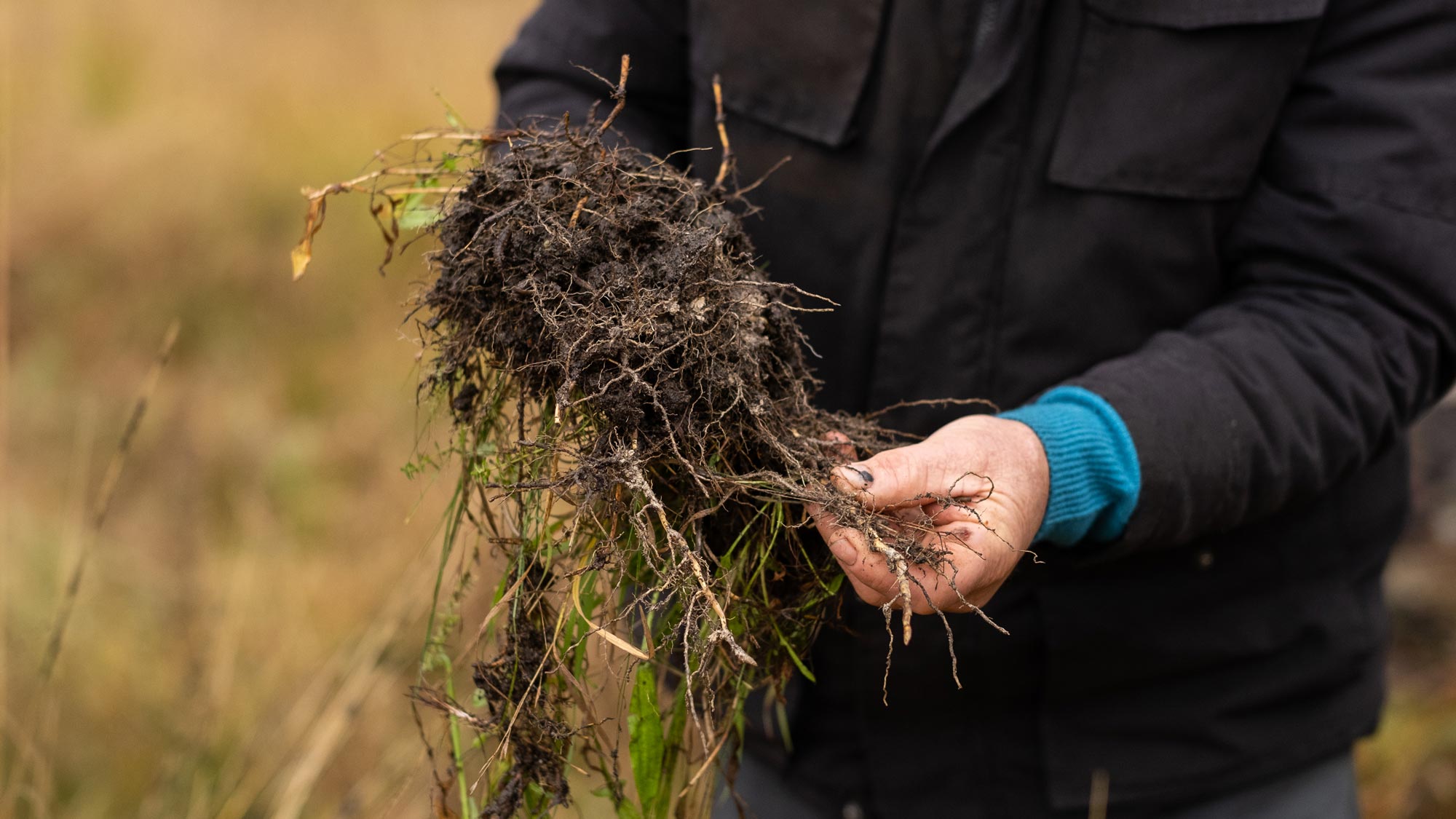Tool 7.5 Grazing management guidelines for individual species
Individual pasture and forage species have specific grazing requirements. You can use these requirements to increase or maintain a species or to decrease a species (i.e. increase the relative contribution of other species in the mixture). The table in this tool contains species-specific information and following are general rules for grazing management.
Grazing frequency
Plants that can cope with heavy, continuous grazing during their growing season are those with a prostrate (flat) growth habit (sub clover, annual medics and many broadleaf weeds such as capeweed, erodium and thistles), or those with rhizomes or stolons (bent grass, couch grass, kikuyu). These plants are able to maintain some leaf for photosynthesis even when grazed very short, and hence are able to survive.
Plants that have a more upright or erect growth habit, such as many introduced and native perennial grasses and most annual grasses, are less resilient to heavy, continuous grazing, because most leaf and stem material is easily removed by stock, leaving little capacity for regrowth.
Grazing tactics
If you want to modify your current grazing system or methods, be clear about the benefits you are trying to achieve. For example:
- Use rotational grazing to increase autumn/winter growth rates of desirable perennial and annual grasses. This will improve the size and persistence of perennial grasses and also help suppress broadleaf weeds.
- Use crash-grazing or set stocking (with a high stock density) in spring to prevent annual or perennial grass weeds dominating in problem paddocks and increase the desirable annual pasture content.
- Remove stock from paddocks when groundcover falls below the acceptable limit in your district to protect the pasture and the soil (see chapter 6.2 in MMFS Module 6 Healthy Soils). Maintain groundcover and litter at the time of the season break to reduce germination of annual broadleaf weeds, such as capeweed or dandelion. However, leaving more than 1,000 kg DM/ha (litter/dead pasture) in the paddock at time of the autumn break will reduce germination of annual pastures.
- Maintain a flexible approach and adapt to the conditions to achieve the best possible outcome. Varying seasonal conditions from year to year will affect pasture composition so you need to be able to adapt your grazing system accordingly. Routinely measure ground cover, feed on offer (FOO), pasture growth rate, etc., to make informed decisions based on the season.
- When applying your grazing strategy or tactic, refer to the seasonal targets you have set for the class of livestock grazing the paddock/s (see tool 10.4 and tool 10.5 in MMFS Module 10 Wean More Lambs). Achieving the best outcomes for both pasture and animal production means compromising some objectives. Care should be taken to ensure the compromises (economic, environmental and social) have the least effect possible on the outcomes.
Rest periods for rotational grazing systems should be based on allowing the grass you want to be most dominant in the pasture to grow back a target number of leaves (see table below). Only when this target number of leaves has regrown on a tiller has the plant fully restored its reserves in readiness for the next grazing and re-growth cycle. This may require lowering your stock numbers or deferment of grazing. The following table lists these targets for species where clear rules are available.
| Pasture type | Increase or maintain | Decrease or remove |
| Temperate native grasses |
|
Note – many states/catchments restrict native pasture management interventions– see signposts in chapter 5.3 in MMFS Module 5 Protect Your Farm’s Natural Assets. |
|
Sub-tropical grasses |
|
Note – purple pigeon grass, bambatsi panic and green panic are susceptible to overgrazing due to high palatability. |
|
Phalaris |
|
|
|
Cocksfoot |
|
|
| Perennial ryegrass |
|
|
| Tall fescue |
|
|
| Sub clover |
|
|
| White clover |
|
|
| Lucerne |
|
|
| Grazing cereals |
|
|
| Chicory |
|
|
| Brassicas |
|
|






